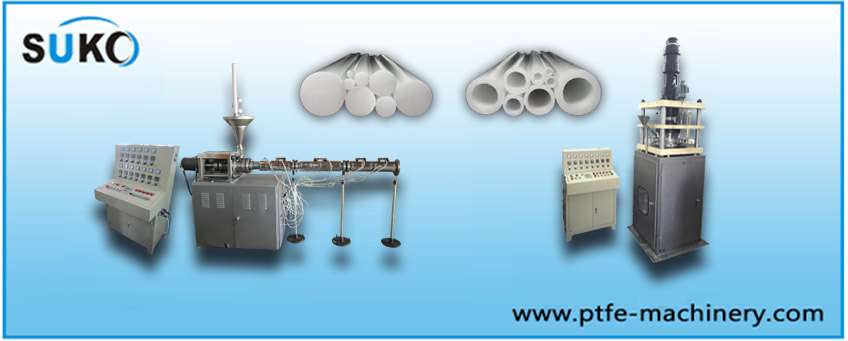Discover the basic methods of processing thermoplastic and thermoset materials:
Plastics are ubiquitous, appearing in the most cutting edge technologies as well as in the most mundane items. These polymers—chainlike molecules—are so widely used that their absence would be instantly and profoundly felt. Plastics can be divided into two groups: 1) thermoplastics, which once formed, can be heated and repeatedly reformed, and 2) thermosets, which cannot be remelted once formed. Here are the basic ways that these two groups of plastics are processed:
Injection Molding
This is the primary method of forming thermoplastics. In injection molding, plastic material gets loaded into a hopper and proceeds into a heated injection unit. A reciprocating screw moves the plastic along this lengthy heating chamber, where the material is melted to a fluid state. When the softened plastic reaches the end of this chamber, it is forced at high pressure through a nozzle and into a cool mold. The plastic is contained within this mold, whose halves are held shut by clamps, until it sets. As soon as the material solidifies, the mold opens, and the press ejects the formed plastic.
Modified versions of this technique are sometimes used to process thermoset materials. But problems can occur because the softened thermosetting plastic can end up hardening while still in the heating chamber. To address this issue, jet molding, offset molding and screw-type machine molding liquefy the thermosetting plastic just as it passes through the injection nozzle into the mold.
Blow Molding
This method is used to form hollow objects out of thermoplastic materials. In blow molding, a molten tube of thermoplastic material is formed, and then compressed air is used to blow up the tube, forcing the material to take the shape of the interior of a chilled blow mold. The most widely used blow molding techniques are extrusion, injection and injection-stretch.
In extrusion blow molding, the plastic material is forced through a die to form the molten plastic tube, which is blown up by compressed air. Meanwhile, injection blow molding involves injection molding a preform—which resembles a test tube—then putting the preform into a blow mold to be filled with compressed air. The third method, injection-stretch blow molding, incorporates the element of stretch before blow forming.
Thermoforming
The process of thermoforming plastic sheet has advanced quickly in recent years. This method involves heating thermoplastic sheet to a compliant plastic state and then using air and/or mechanical assists to make it conform to a mold’s contours.
Air pressure can be anywhere from almost zero to several hundred psi. Up to about 14 psi of atmospheric pressure, the necessary pressure is achieved by vacating the space between the sheet and the mold in order to take advantage of this atmospheric pressure. This is called vacuum forming, a type of thermoforming that will satisfactorily reproduce the mold configuration in most forming applications.
Compression Molding
This is the most widely used method of processing thermoset materials. It’s not normally employed to form thermoplastics. Compression molding involves applying heat and pressure on a material in a mold so that it is squeezed into a particular shape.
In this process, plastic molding powder, blended with fillers to enhance the final product’s properties, is placed directly into an open mold cavity. The mold is then shut, applying heat and pressure on the plastic and forcing it to flow throughout the mold. While the heated mold is closed, the thermosetting plastic chemically changes and permanently sets into the mold shape. The three compression molding variables—pressure, temperature and the time the mold is closed—differ with the product design and the material being formed.
Transfer Molding
Like compression molding, this method is used to form thermoset materials and involves permanently curing the plastic in a mold under heat and pressure. Unlike compression molding, however, transfer molding includes heating the plastic to a fluid state before it gets to the mold and forcing it into a closed mold using a hydraulically actuated plunger.
Transfer molding was designed to mold complex objects with small deep holes or many metal inserts. While compression molding relies on a dry mold compound that can disrupt the placement of the metal inserts and pins that form the holes, the plastic material in transfer molding is liquefied so that it can flow around these metal parts without disturbing their position.
Reaction Injection Molding
This processing technique is relatively new but has quickly gained acceptance. In reaction injection molding (RIM), two liquid components—polyols and isocyanates—are blended in a chamber at comparatively low temperatures (75°-140°F) before being injected into a closed mold, where an exothermic reaction takes place. Because of this reaction, this process consumes much less energy than any other injection molding system.
Reinforced RIM (R-RIM) involves adding material such as chopped or milled glass fiber to the polyurethane to improve stiffness and modulus and thereby broaden applications.
Extrusion
This method can form thermoplastic materials into continuous sheeting, film, tubes, rods, profile shapes and filaments. Additionally, this process is used to form thermoplastics into coatings for wire, cable and cord.
In extrusion molding, dry plastic material is first put into a hopper that feeds into a lengthy heating chamber. The plastic material is pushed through this chamber by a continuously revolving screw. Upon reaching the end of the chamber, the molten material is forced out through a tiny opening or die, which bears the shape required in the final product. As the plastic extrusion emerges from the die, it is placed onto a conveyor belt where it is cooled, most commonly by blowers or through water immersion.





I love your blog.. very nice colors & theme. Did you make this website yourself or did you hire someone to do it for you? Plz reply as I’m looking to construct my own blog and would like to know where u got this from. many thanks